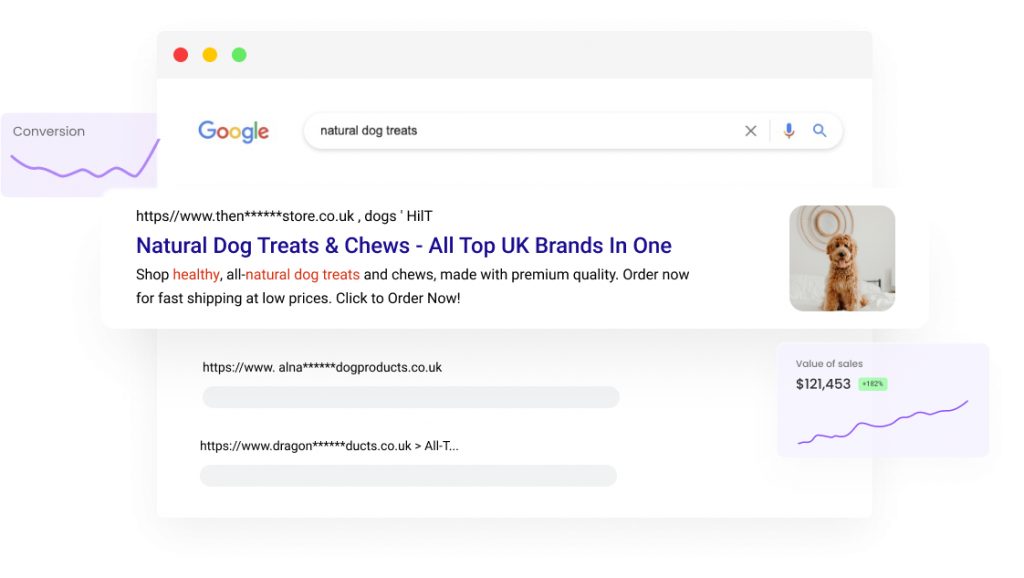As a Shopify store owner, you may share your website with your friends and targeted customers very often. However, do you know that you can modify your Shopify URL to improve your SEO rankings?
This article presents a detailed explanation of different types of Shopify URL structures and shows how to create unique URLs for different countries and regions, which is very useful for stores targeting more than one country. Moreover, there are 4 tips for you to make your URLs more SEO-friendly in this article.
Different Shopify URL Structure Types
There are several types of URL structures on Shopify. To make it clear, we categorize them into 4 types in this article. They are product URL structure, collection URL structure, blog URL structure and others.
As an online store owner, you might be a bit confused when you hear these terms. But don’t worry, we will now elaborate on how to manage Shopify URL structure.
How to manage the structure?
1. Product URL Structure
In your Shopify store, each product has its unique URL. Customers can use the URL to access the product page. Shopify has come up with the idea of “product handle”, which is a simplified version of a product title. A product handle is introduced to generate product URLs. Unlike product titles, product handles remove all spaces and special characters and replace all capital letters with lowercase letters. What it does is to make product URLs more user-friendly and improve their SEO rankings in a search engine.
Let’s take a simple example to see what a product URL looks like and how a product handle works. Let’s say the product is the “Mercedes F1 Model”. According to the rules of product handle, the product name will be modified into “mercedes-f1-model”. Consequently, the product URL will look like “yourstorename.myshopify.com/products/Mercedes-f1-model”.
In this product URL, “yourstorename” is your store domain, “products” indicates that it is a product URL, and the following is the product handle. You can easily customize the URL by using customization options such as URL redirects, custom domain or other third-party applications.
2. Collection URL Structure
If you sort out a collection of products in your Shopify store, you will have a unique web address for it, which is regarded as a collection URL. Categorizing your products into different collections in your store makes the structure of your store clearer. For customers, it will be easier to locate the products they are looking for if you create multiple collections in your Shopify store. Some customers would like to compare product A with product B, and by having a specific collection URL, customers can check out the prices and differences on that collection page.
The default collection URL is https://yourstorename.myshopify.com/collections/collection-name, where “collection-name” follows the collection handle rules that are the same as rules for product handle, cutting spaces, special characters and capital letters. “/collections/” tells that this URL is a collection URL. Overall, the collection URL structure greatly enhances the browsing experience for customers and makes managing a Shopify store in a much more organized manner.
3. Blog URL Structure
You can have your blog links inserted in your Shopify store. The blog URL structure is very crucial as Shopify’s blogging platform is designed to have more than one blog in your store. Therefore, your blogs can be seen as categories within your website. For example, “/blogs/return&exchange”, “/blogs/news”, and “/blogs/service”.
To access the specific blog, the entire URL has to be entered. If you navigate to “…/blogs/”, you will not see the list of blogs you have in your store.
Apart from product, collection and blog URL structure, there are more related to more specific functionality. For example, you can create your “Contract” page, “About” page and more. For these pages, the name of a page follows “…/pages/”. Let’s take the About page as an example, your “About” page URL will look like “yourstorename.myshopify.com/pages/about”. Bear in mind that you cannot remove or customize “/pages/”.
How to set up unique URLs for specific countries or regions?
It might be necessary to create unique URLs for different countries and regions if your target customers are in different countries and regions. To enhance their shopping experience, creating unique URLs for your targeted regions is recommended. Paying non-domestic currency can be a problem for some countries, therefore, Shopify Payment is highly recommended, through which you can set a specific currency for each regional URL to the local currency.
There are three ways to establish regional URLs. Let’s say we are creating a website for German customers.
1. Top-level domains: “store-name.de”
2. Subdomains: “de.store-name.com”
3. Subfolders: “store-name.com/de-de”
You also need to choose the best SEO strategy for your store in different regions. After setting up your international domains, it is crucial to navigate your customers to the appropriate URL.
How to make Shopify URLs SEO-friendly?
Due to Shopify’s highly flexible feature, there are many ways to make your Shopify URLs more SEO friendly and improve your website’s ranking in search engines.
1. Keep URLs short but descriptive: make sure that you don’t have unnecessary and unrelated words in your URLs. Your URLs should be descriptive and representative of your products. If needed, you are recommended to use hyphens to separate words, which makes it easier for customers to read.
2. Include keywords: irrelevant words do not help your SEO ranking. Remember to only use keywords that describe your products precisely. You want your website to appear at the top when people search for your products.
3. Implement 301 redirects: it happens very often when you change your URL, do remember to set up a 301 redirect to redirect from the old URL to the new URL.
4. Use subfolders for other countries and regions: if your store is facing customers from many different countries. You may want to set up subfolders for different languages, for example German, French, Russian and so on. This can significantly improve your website’s ranking on search engines in different countries.
How Do I Customize My Shopify Link?
1. Log into your dashboard and find the “online store” option. Then, you will see the “Navigation” in the menu.
2. You will see a list of navigation areas, choose the one that you wish to customize. A window for editing will pop up where you can find the option to change your Shopify link URL or the link title.
3. Customize your Shopify link and include keywords that represent your products. This process is very important as it affects your SEO ranking in search engines. Relative keywords can improve the visibility of your website.
4. Once you finish your customization, remember to save the change.
FAQs

- How do I migrate from another platform to Shopify?
Migrating from other platforms is a huge project. The easiest way is to hire an SEO agency that can deal with everything about it. Otherwise, you need to change your URLs, redirect old URL structures and wipe out the previous page.
More details are available at https://logeix.com/shopify-seo/url-structure#changing-urls
- What should be considered before changing the URL structure in Shopify?
Before making a decision about whether to change your Shopify URL structure or not, you need to consider the impacts on your website’s search engine rankings. If you think altering the URL structure will detrimentally affect your SEO rankings, then you should think about making minor changes such as changing your URL link to improve your SEO rankings.
- Does changing the format of a Shopify URL affect the search engine rankings?
Changing the format of your URLs could have an impact on the search engine rankings. There are many ways to improve your search engine rankings. By using SEO platforms such as SEO PowerSuite, you can mitigate negative influence on your website’s performance in search engines.
- What is the URL format for Shopify?
The standard Shopify URL format contains a store domain (yourstorename.myshopify.com) and paths for products “/products/”, collections “/collections”, blogs “/blogs/” and pages “/pages/”. For international domains, you can include top-level domains, subdomains or subfolders to optimise your ranking in different countries and regions.
- How do I find my Shopify store URL?
Log in to your admin and find “online store”. You will see “Domains” in the dropdown menu. Your Shopify store URL is displayed under “Primary domain”. There is another way to find your URL, you can directly find the store URL in the address bar in the browser when you are on the admin page.
Outro
Customizing URLs is a very common way for Shopify store owners to enhance their websites’ SEO. Based on Shopify’s default framework, there are many techniques to manage the URLs. There are four types of URL structures on Shopify, including product, collection, blogs and pages. You can also create unique URLs for different countries and regions for internationalization purposes. You may customize your Shopify link according to the instructions mentioned above to increase your business’s visibility in search engines.



